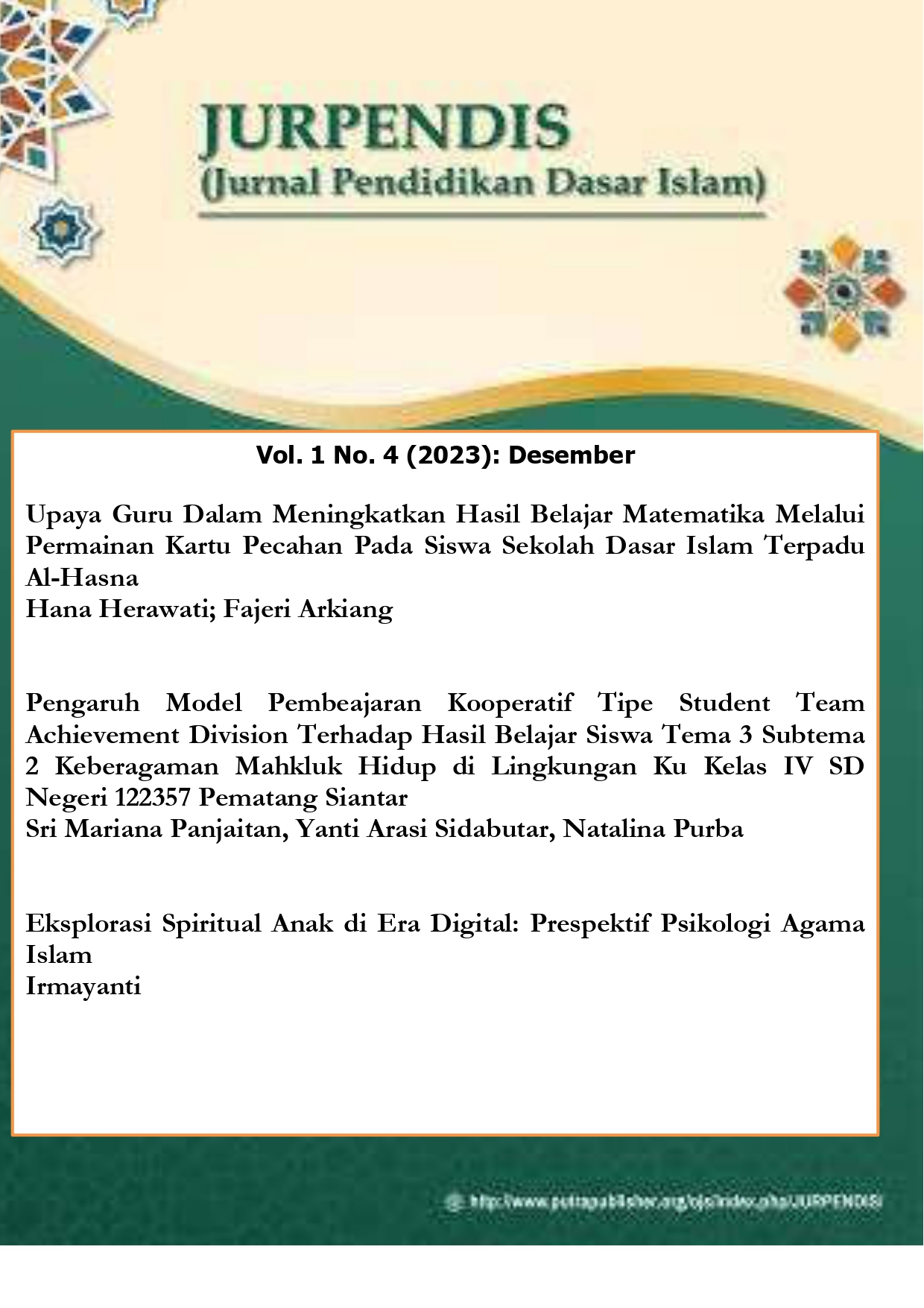Peningkatan Kedisiplinan Belajar Matematika Siswa Melalui Strategi Pembelajaran Group Investigation Bagi Siswa Sekolah Dasar
DOI:
https://doi.org/10.58540/jurpendis.v1i4.503Keywords:
discipline, studying mathematics, group investigationAbstract
The aim of this research is to examine the improvement of mathematics learning discipline for students in Class II at SDN 4 Pemangkat through the use of group investigation learning strategies. The method used in this research is a classroom action research method, which consists of two cycles. The primary data source used is a second-grade teacher, and the secondary data consist of several relevant journals and books. Data collection techniques include questionnaires, interviews, and documentation. Data analysis uses the flow method, namely data reduction, data presentation, and data verification. The results of the research show an increase in students' mathematics learning discipline, which can be seen from the increase in indicators including: 1) students starting lessons on time - before the action, it was 37.5%, in Cycle I it reached 50%, and after the action in Cycle II it was 87.5%; 2) students submitting assignments on time - before the action, it was 25%, in Cycle I it reached 40.62%, and after the action in Cycle II it became 81.25%; 3) students obediently following the learning process - before the action, it was 25%, in the first cycle of the class action it reached 40.62%, and after the action in the second cycle it became 75%; 4) only 15.62% of students were obedient in doing their homework before the action, in the first cycle of the class action it reached 34.37%, and after taking action in Cycle II it became 81.25%. Based on the description above, it can be concluded that implementing the cooperative group investigation strategy in mathematics learning can improve student learning discipline
References
Arends, R. (2008). Learning To Teach (Fourth Editing). Boston: Mc. Graw Hill Co.
Huda, M. (2011). Cooperatif Learning (Metode, Teknik, Struktur, dan Model Penerapan). In Yogyakarta: Pustaka Pelajar.
Karwadi. (2005). Upaya Guru Dalam Menumbuhkan Motivasi Belajar Siswa di Sekolah. Jurnal Pendidikan Agama Islam, 1(1), 41–52.
Maret, E. (2009). Pengembangan Perangkat Pembelajaran Kooperatif Tipe Group Investigation Topik Limit Fungsi Aljabar pada Siswa Kelas XI. Jurnal Pendidikan MIPA, 1(2), 92–100.
Nurhadi. (2004). Kurikulum 2004 Pertanyaan dan Jawaban (Issue 1). PT Gramedia Widiasarana Indonesia.
Rohani, A. (2004). Pengelolaan Pengajaran. Rineka Cipta.
Saffat, I. (2009). Optimized Learning Strategy. Prestasi Pustaka.
Sumardi. (2004). Usaha Meningkatkan Konsentrasi Siswa dalam Pembelajaran Matematika Melalui Ketrampilan Guru Mengelola Kelas pada Siswa MTs. Jurnal Pendidikan MIPA, 14(1), 1–10.
Surya, E. (2011). Analisis Pemetaan dan Pengembangan Model Pembelajaran Matematika SMA di Kabupaten TAPTENG dan Kota Sibolga Sumatera Utara. PARADIKMA, 6(1), 75–88.
Sutama. (2007). Model Pembelajaran Kooperatif Tipe Group Investigation untuk Pengembangan Kreativitas Mahasiswa. Varidika, 19(1), 114.
Tahar, I., & Enceng. (2006). Hubungan Kemandirian Belajar dan Hasil Belajar pada Pendidikan Jarak Jauh. Jurnal Pendidikan Terbuka Dan Jarak Jauh, 7(2), 91–101.
Yensy, N. A. (2012). Penerapan Model Pembelajaran Kooperatif Tipe Examples Non Examples Dengan Menggunakan Alat Peraga Untuk Meningkatkan Hasil Belajar Siswa di Kelas VIII SMP Negeri 1 Argamakmur. Jurnal Exacta, 10(1), 24–35.
Zakaria, E., C. L. C., & Daud. (2010). The Effects of Cooperatif Learning on Students’ Mathematics Achievement and Attitude Towards Mathematics. Journal of Social Sciences, 6(2), 272–275.
Downloads
Published
Issue
Section
License
Copyright (c) 2024 Jurnal Pendidikan Dasar Islam

This work is licensed under a Creative Commons Attribution-NonCommercial-ShareAlike 4.0 International License.







